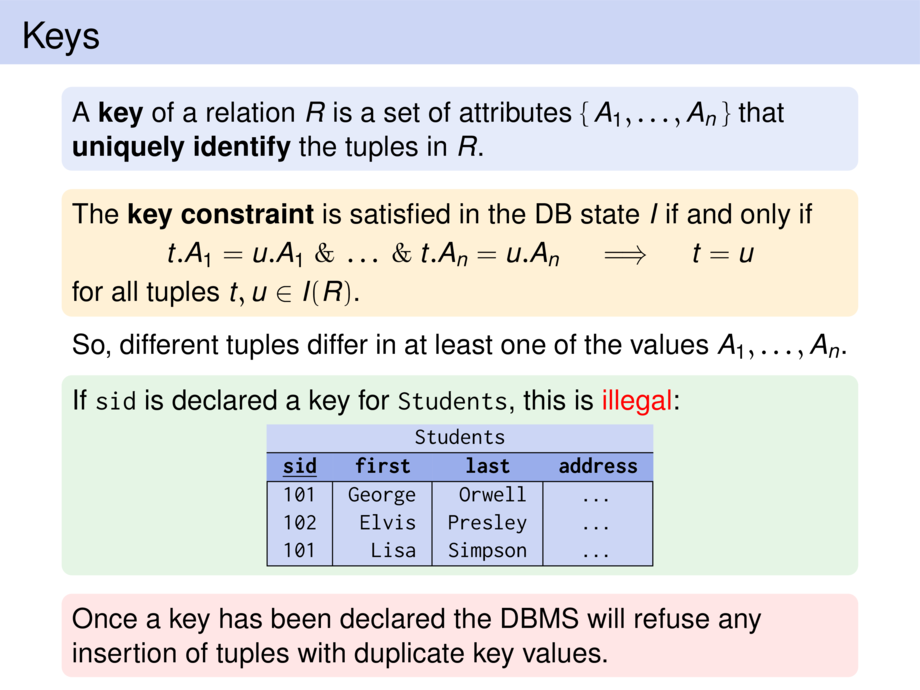



































































































44/77
\begin{frame}
\frametitle{Keys}
\begin{block}{}
A \textbf{key} of a relation $R$ is a set of attributes $\{\,A_1,\ldots,A_n\,\}$ that
\textbf{uniquely identify} the tuples in $R$.
\end{block}
\pause
\begin{goal}{}
The \emph{key constraint} is satisfied in the DB state $I$ if and only if
\begin{tcenter}
$t.A_1 = u.A_1 \;\&\; \ldots \;\&\; t.A_n = u.A_n \quad\implies\quad t = u$
\end{tcenter}
for all tuples $t,u \in I(R)$.
\end{goal}
So, different tuples differ in at least one of the values $A_1,\ldots,A_n$.
\begin{exampleblock}{}
If \sql{sid} is declared a key for \sql{Students}, this is \alert{illegal}:
\centerline{%
{\tableSmall
\colorbox{rellight}{%
\begin{tabular}[t]{|r|r|r|c|}
\multicolumn{4}{c}{Students} \\ \hline
\hd{\underline{sid}} & \hd{first} & \hd{last} & \hd{address} \\ \hline
101 & George & Orwell & \normalfont\ldots \\
102 & Elvis & Presley & \normalfont\ldots \\
101 & Lisa & Simpson & \normalfont\ldots \\
\hline
\end{tabular}%
}}%
}
\end{exampleblock}
\pause
\begin{alertblock}{}
Once a key has been declared the DBMS will refuse any insertion of tuples with duplicate key values.
\end{alertblock}
\end{frame}

